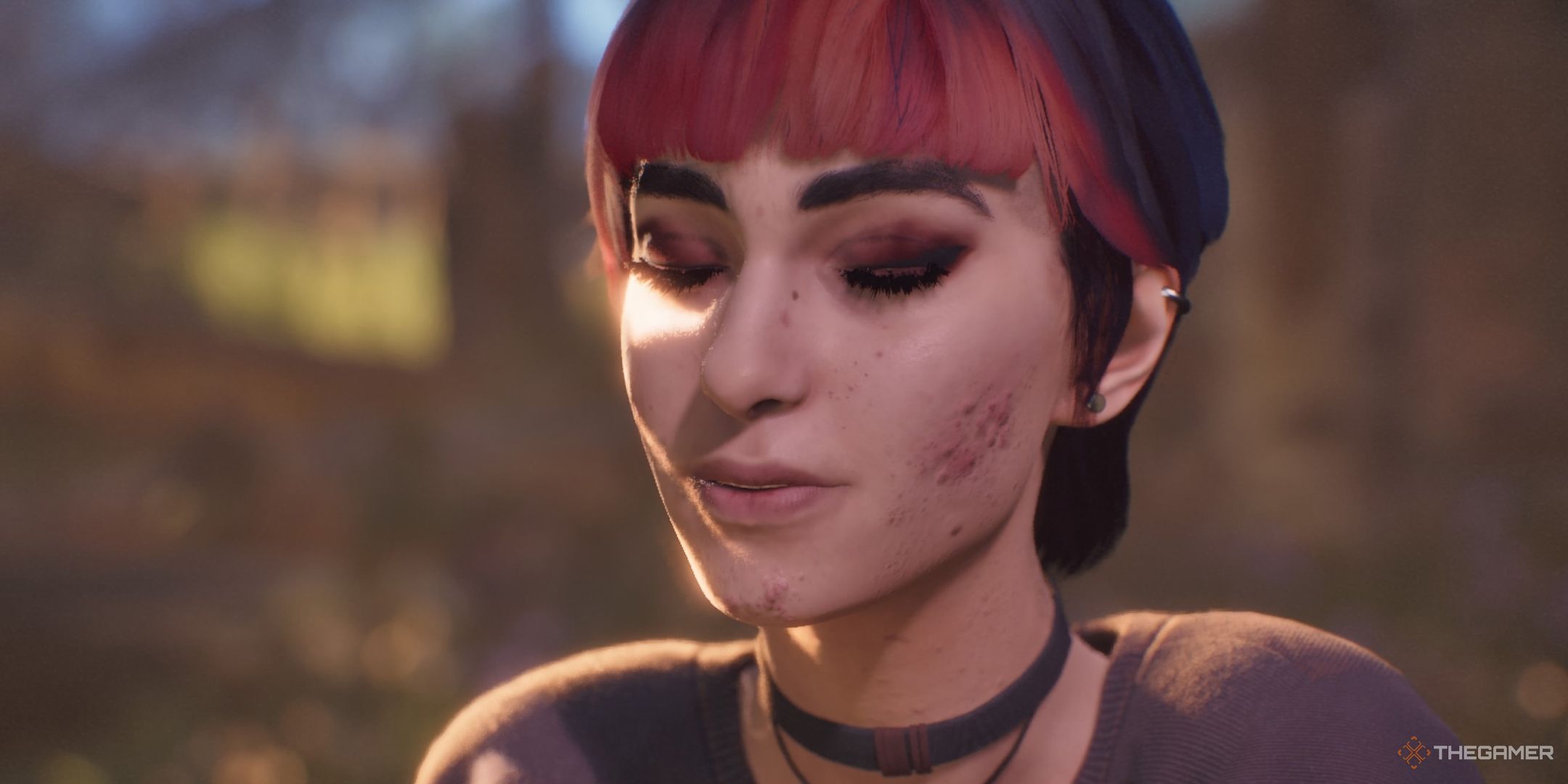Life is Strange and Lost Records: Bloom & Rage have many obvious similarities. They share a developer in Don’t Nod. They both focus on teenage girls, who are necessarily deeply cringey by nature of their immaturity and self-consciousness. They both tell coming-of-age stories of some kind, albeit with a supernatural twist or two.
They both rely heavily on nostalgia to create atmosphere – Life is Strange has a soundtrack featuring music from Local Native, Alt-J, Bright Eyes, and Foals, building out a thoroughly hipster 2000s-era world, while Lost Records uses riot grrrl culture and punk to drive home the rebellious vibe of the ‘90s.

Related
Same, But Different
They both also focus heavily on teenage female friendship, that ever-shifting, often painful thing so many of us have gone through. In Life is Strange, it’s the intense relationship between Max Caulfield and Chloe Price that may or may not blossom into romance, depending on your choices. In Lost Records, it’s between a group of teenage girls, bound together by their anger at the world and the solace they find in one another.
But they both have very different depictions of that friendship, and that’s the crucial difference here. Life is Strange depicts a pair of girls, one rebellious and angry, one introverted and self-sacrificing. Their relationship is in turns codependent, loving, toxic, and joyful. Lost Records complicates things by showing us what groups of teenage girls can be like, how the intensity of female friendships is amplified and complicated by the dynamics between separate pairs of people. It’s this difference that makes Lost Records feel truer to life than Life is Strange ever did.
I went to a convent school from the ages of 12 to 16, which means I spent very little of my adolescence around men that I wasn’t related to. Many of my friends were queer, angry, or both. While my music taste skewed on average towards the indie tracks Max Caulfield listens to in Life is Strange, this was where I’d meet the women I’d later go to hardcore shows with, who would watch out for me in mosh pits, or who’d at least carry the contents of my emptied out pockets when I dove in, fists flailing. More than a decade after I graduated from that school, it’s still these women that I travel with, go to shows with, and turn to when I need emotional support. It’s a saying where I’m from that convent friends are friends for life. For me, that’s turned out to be largely true.
Related
Lost Records Commits The Cardinal Sin Of Collection Games
Bloom & Rage lets you wander around, but not enough of the world is tactile.
In Lost Records, Girls Get To Be Girls
When I play Lost Records and watch these young women running around in the woods together, refurbishing creepy old cabins with their bare hands, playing music and screaming into microphones, I think of what it was like to grow up away from the expectations of young men. My life revolved around girls, what we thought of each other, the time we’d spend together, the music we’d play for each other over the phone, the mixtapes we made each other as gifts, the handmade Valentines passed across school desks, labours of love.
There was a real romance to it, a true, pure platonic love as intense as any romantic relationship. A lot of that nostalgic romance is on full display in Lost Records. TikTok trends would reduce this to ‘girlhood’, but it’s more complex than that. There’s a real liberation in growing up around just women who see you not in terms of your value to men, but your value to each other.

Related
Lost Records: Bloom & Rage Has Great Acne
Don’t Nod captures what it actually looks like to be a teenager.
That’s not to say that men are absent from Lost Records – they are not. Corey bullies and threatens the girls, wielding his masculinity and age as a threat, while his girlfriend Dylan (the perfect picture of a woman who acts within the male gaze) eggs him on. Many of the times Swann talks about her weight, it’s because Corey said something, or because of a boy at school. Men, and the women who attach themselves to them, are largely depicted as threats.
In fact, the premise of riot grrrl culture, which Lost Records leans heavily on, is feminist, a political movement that could not exist without recognition of the oppression of women by men. In a way, it feels as if these women’s bonds are in keeping with riot grrrls, excluding men entirely, the way bands of the time were comprised only of women.
Some of my intense female relationships stood the test of time, but many did not. Lost Records recognises this, too, with the mysterious reason for the group’s separation at the core of the game and not explained in Part 1.
That’s also not to say that Life is Strange’s core relationship wasn’t pure or honest, but it definitely is different. The central conceit was the tie between Max and Chloe, one that was marred by their own individual issues and outside influences. But Lost Records faithfully represents what it’s like to grow up around women and be able to just be.

Mystery
Adventure
Narrative
- Released
-
February 18, 2025
- ESRB
-
Mature 17+ // Blood and Gore, Nudity, Strong Language, Suggestive Themes. Use of Drugs and Alcohol, Violence
- Developer(s)
-
DON’T NOD
- Publisher(s)
-
DON’T NOD












Leave a Reply